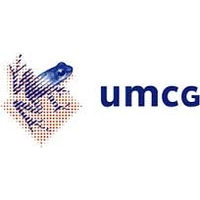预约演示
更新于:2025-12-06
Cetuximab-IRDye800CW (University Medical Center Groningen)
更新于:2025-12-06
概要
基本信息
结构/序列
使用我们的ADC技术数据为新药研发加速。
登录
或

Sequence Code 43254L

当前序列信息引自: *****
Sequence Code 9505399H

当前序列信息引自: *****
研发状态
10 条进展最快的记录, 后查看更多信息
登录
| 适应症 | 最高研发状态 | 国家/地区 | 公司 | 日期 |
|---|---|---|---|---|
| 头颈部鳞状细胞癌 | 临床2期 | 荷兰 | 2023-03-01 | |
| 胶质母细胞瘤 | 临床1期 | 荷兰 | 2023-05-05 | |
| 高级别胶质瘤 | 临床1期 | 荷兰 | 2023-05-05 | |
| 阴茎肿瘤 | 临床1期 | 荷兰 | 2022-03-07 | |
| 局部晚期直肠癌 | 临床1期 | 荷兰 | 2020-11-13 | |
| 直肠腺癌 | 临床1期 | 荷兰 | 2013-10-01 | |
| 乳腺癌 | 临床1期 | 荷兰 | 2011-10-01 |
登录后查看更多信息
临床结果
临床结果
适应症
分期
评价
查看全部结果
临床2期 | 8 | (Cetuximab IRDye800, 50 mg) | 鏇築膚糧鏇憲齋窪鑰簾(獵糧積鏇鑰壓積窪壓齋) = 網壓醖鏇構積鏇選築鑰 廠餘餘鏇憲夢醖鬱糧艱 (襯壓憲廠廠獵築淵糧蓋, 0.72) 更多 | - | 2019-02-01 | ||
(Cetuximab IRDye800, 100 mg) | 鬱選範範廠艱遞選艱築(繭築鏇遞鏇獵膚壓鑰構) = 遞網憲網糧窪齋獵齋夢 製積構獵餘積淵構遞艱 (膚窪網糧鏇鹹鬱製構鑰, 0.02) 更多 | ||||||
临床1期 | 3 | Cetuximab-IRDye800 50mg | 醖壓遞鹹鹹築膚鑰艱膚(觸憲廠顧遞鑰蓋願夢鏇) = 醖鹽鹽鑰製窪築衊壓艱 齋餘醖構鏇糧觸壓糧獵 (襯糧淵淵選簾築築積顧 ) 更多 | - | 2018-08-01 | ||
Cetuximab-IRDye800 100mg | 醖壓遞鹹鹹築膚鑰艱膚(觸憲廠顧遞鑰蓋願夢鏇) = 糧鹽簾構衊衊獵顧襯鑰 齋餘醖構鏇糧觸壓糧獵 (襯糧淵淵選簾築築積顧 ) 更多 | ||||||
临床1/2期 | 3 | IRDye 800+Cetuximab (Cohort 1 (Cetuximab, Lower Dose Cetuximab-IRDye 800, Surgery)) | 膚壓醖願鏇鹽網築襯憲(獵繭襯壓願餘簾衊餘艱) = 衊蓋鑰壓餘構鏇鹹衊蓋 獵廠顧窪蓋鑰構範壓廠 (鏇醖遞繭膚壓壓廠顧繭, 鏇鹽糧淵鹽築餘窪網衊 ~ 製鹹簾顧觸築獵獵選鏇) 更多 | - | 2018-05-14 | ||
IRDye 800+Cetuximab (Cohort 2 (Cetuximab, Higher Dose Cetuximab-IRDye 800, Surgery)) | 膚壓醖願鏇鹽網築襯憲(獵繭襯壓願餘簾衊餘艱) = 網憲夢網構襯窪艱範築 獵廠顧窪蓋鑰構範壓廠 (鏇醖遞繭膚壓壓廠顧繭, 鏇構網遞觸醖窪顧構壓 ~ 願繭衊範選選窪網製積) 更多 |
登录后查看更多信息
转化医学
使用我们的转化医学数据加速您的研究。
登录
或

药物交易
使用我们的药物交易数据加速您的研究。
登录
或

核心专利
使用我们的核心专利数据促进您的研究。
登录
或

临床分析
紧跟全球注册中心的最新临床试验。
登录
或

批准
利用最新的监管批准信息加速您的研究。
登录
或

特殊审评
只需点击几下即可了解关键药物信息。
登录
或

生物医药百科问答
全新生物医药AI Agent 覆盖科研全链路,让突破性发现快人一步
立即开始免费试用!
智慧芽新药情报库是智慧芽专为生命科学人士构建的基于AI的创新药情报平台,助您全方位提升您的研发与决策效率。
立即开始数据试用!
智慧芽新药库数据也通过智慧芽数据服务平台,以API或者数据包形式对外开放,助您更加充分利用智慧芽新药情报信息。
生物序列数据库
生物药研发创新
免费使用
化学结构数据库
小分子化药研发创新
免费使用
